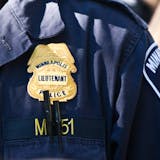Standing in the heart of a state that has gloried in its role in helping save the Union at Gettysburg, President Donald Trump extolled at length Friday the battle prowess of a seemingly odd hero — Gen. Robert E. Lee.
Some Minnesota veterans and Civil War historians were surprised to hear the commander-in-chief lavish praise on a man who led the Confederacy's fight against Americans trying to preserve the Union.
"Had he won, we would be two countries," state Sen. Jerry Newton, a veteran who served in the Vietnam War and the Middle East, said Saturday. "That's just unconscionable for me, for him to make those statements."
Newton, a Coon Rapids DFLer, said the president praising Lee "hurt for those of us who have served and who have lost friends in the service."
On Friday, the president told a crowd of thousands at his rally in Bemidji that Lee, commander of the Confederate Army, "won many, many battles in a row."
"It was supposed to end immediately because the North was too powerful for the South," he said. "But it just shows when you have leaders, when you have a great general. And Robert E. Lee, he would have won, except for Gettysburg."
Minnesota has a rich Civil War history, and soldiers from the state are credited with courageous actions and sacrifices that led to victory at Gettysburg.
Trump suggested that removing statues of the general, as some activists and state and local governments have done over concerns that they perpetuate racism and white supremacy, is "crazy."


